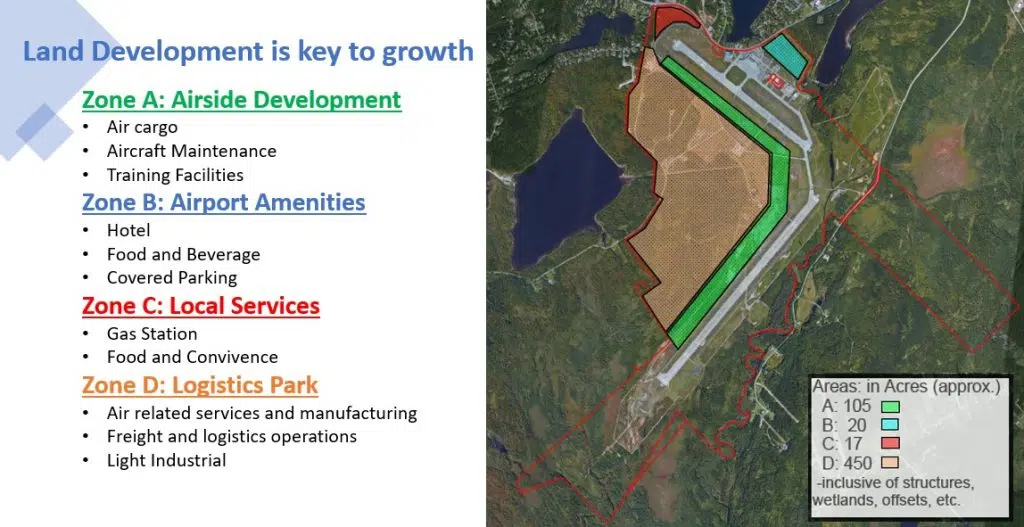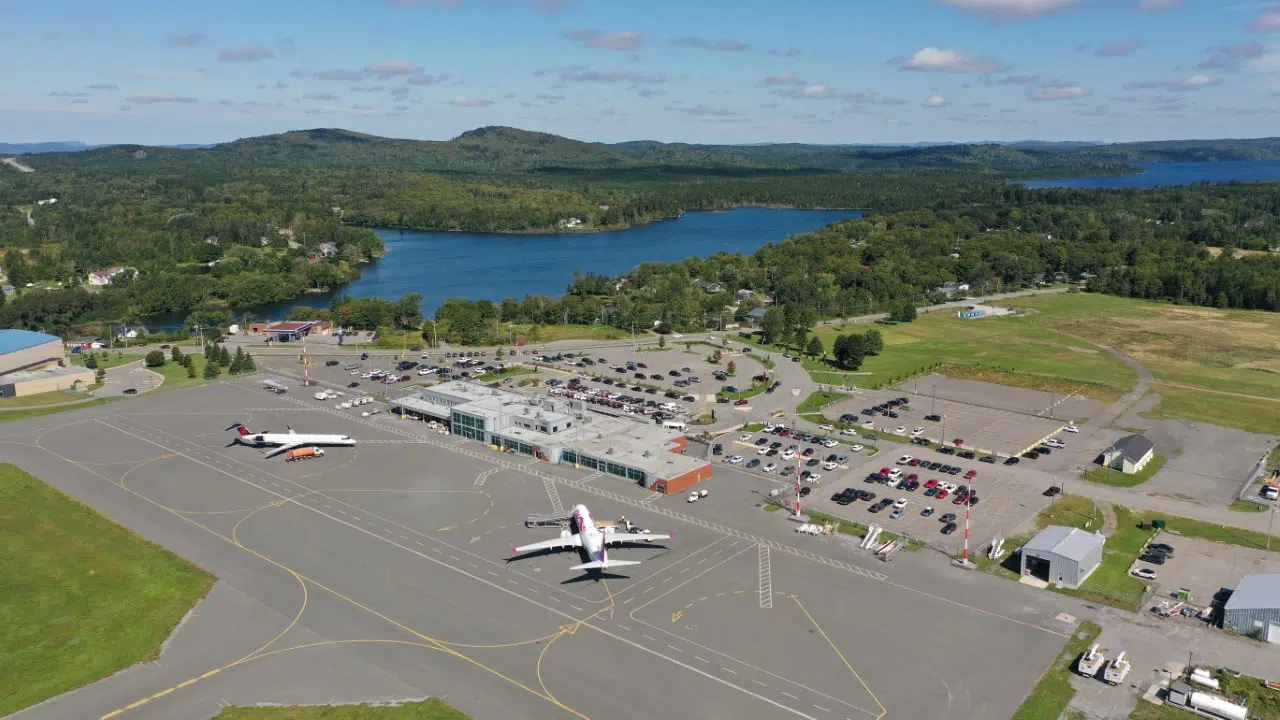The Saint John Airport wants to help solidify the city’s position as a logistics hub for the next century.
Officials at the airport unveiled ambitious plans this week for 650 acres of development-ready land.
“The airport has been doing a lot of work, taking a look at the market, where we have opportunity and how we’re going to be able to grow,” Sandy Ross, president and CEO, said in an interview this week.
According to documents provided by the airport, the development-ready land has been divided into four areas.
The largest, about 450 acres, is for a logistics park which could include “air-related service and manufacturing,” along with “freight and logistics operations” and “light industrial.”
In addition, another 105 acres have been set aside for airside development, including the potential for air cargo operations.
Ross said the recent expansion at Port Saint John has “really opened up this opportunity” for the airport and made this plan timely.
“The port, the land transportation and the railroads represent sea, road and rail. But what’s really been missing is air cargo operations,” he said.
“That is what’s really going to open the door, I think, to Saint John being able to solidify its position as a logistics hub for the next century.”
In addition to the logistics park and airside development, the airport also plans to add more amenities such as a hotel, food and beverage services and covered parking.
There is also a piece of land off Loch Lomond Road for additional “local services” such as a gas station and convenience store.

Around 650 acres of land, divided into four areas, is ready for development at the Saint John Airport. Image: Submitted/Saint John Airport
Ross said the redevelopment plans come as Transport Canada recently extended the airport’s land lease through the year 2079.
“If you’re going to build a $20-million or a $30-million facility and your land lease is less than 40 or 50 years, you can’t fully depreciate the value of that and get all of the tax advantages associated with that build,” he said.
While the full build-out is likely at least 10 years out, Ross said there would be many long-term advantages for the airport and the community.
The CEO said all of the money generated from the leases would go back into the airport’s operations, allowing it to expand services for travellers.
“We’re a not-for-profit and our mandate says that any profits that we make from this have to be re-introduced into the airport in the way of services or lower fees,” said Ross.
YSJ could also use those funds to help attract other carriers that might be looking for “cash bonuses or revenue guarantees or just being able to offset some of the risks” of coming into Saint John, he said.
Ross did not give any dollar figures for the plans but said they hope all of the funding will “essentially be commercially viable.”
“Everything really needs to stand on its own two feet,” said Ross.
But he said the airport may need some government funding in order to get some of the projects started
For example, Ross said the airport would probably need to extend its runway if it were looking into long-range cargo.
“Perhaps that would be something we’d be looking to talk to the federal government about borrowing those funds in order to be able to finance a project like that,” he said.
The proposed plan still needs to be approved by the airport’s board of directors, but Ross said the first announcement could be made in the next three or four months.










